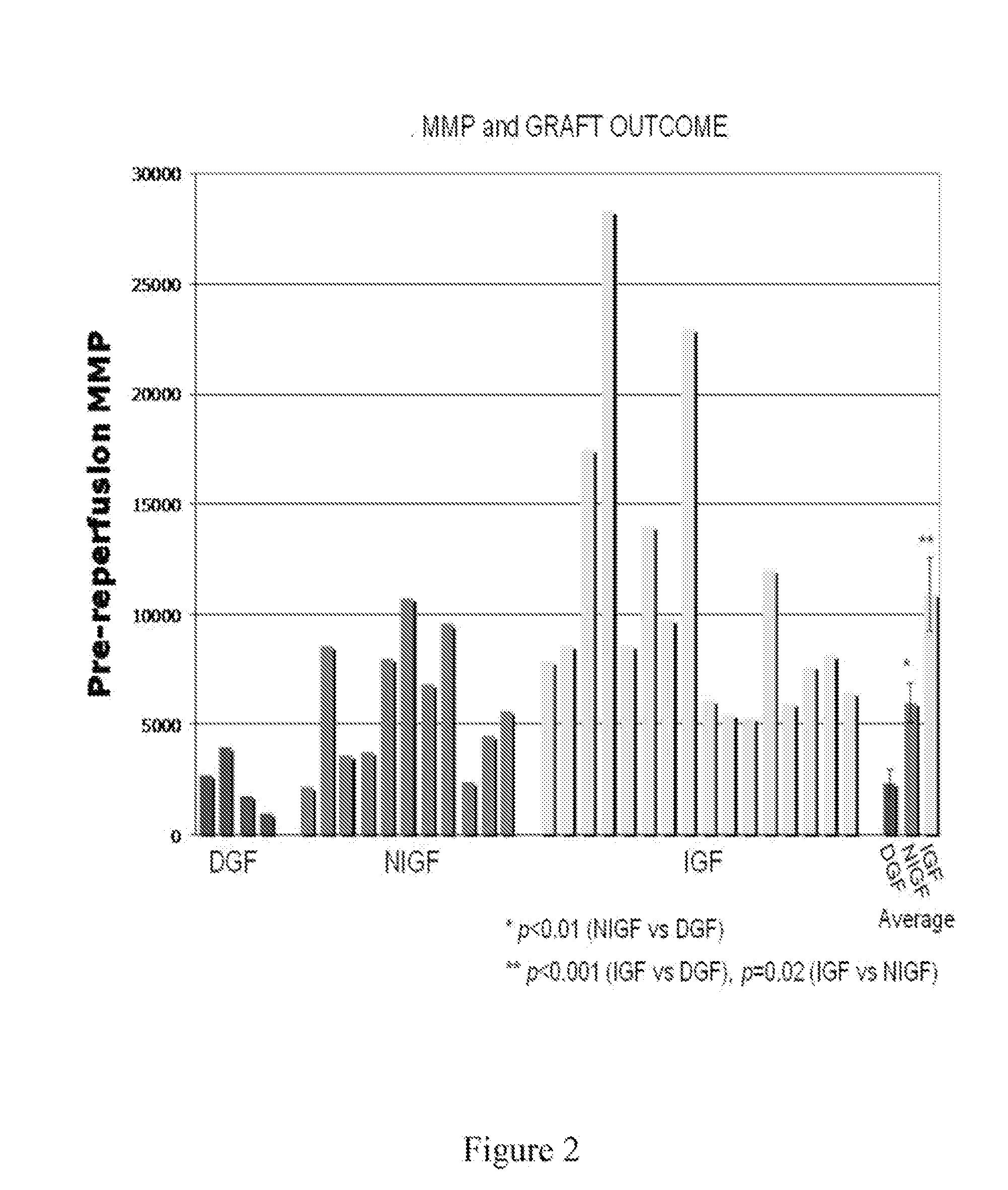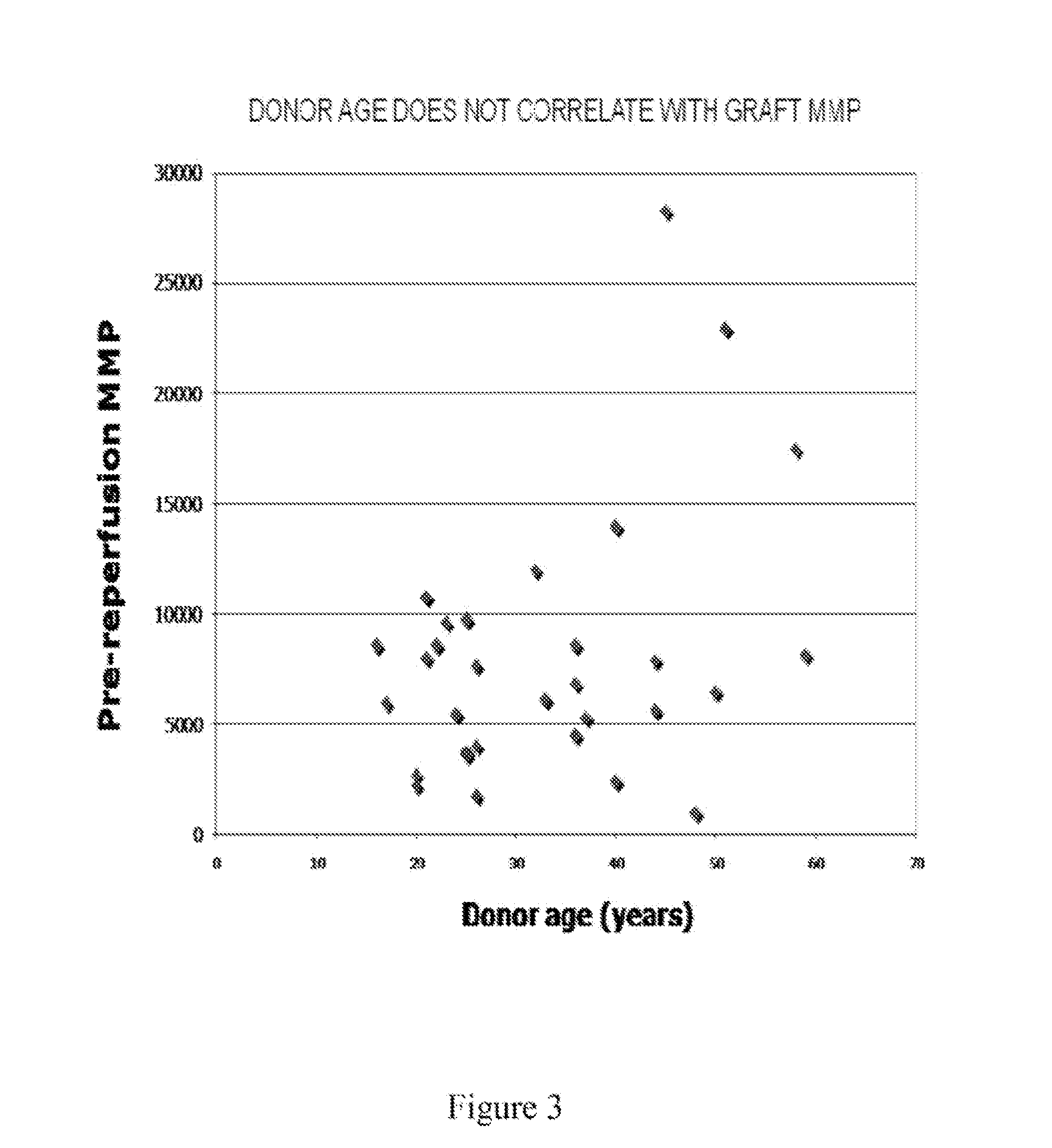Measurement of Mitochondrial Membrane Potential to Assess Organ Dysfunction
a mitochondrial membrane and potential measurement technology, applied in the field of organ transplantation, can solve the problems of deterioration of function, continuous limitation of surgical therapy, and proportion of kidneys which do not function well or no
- Summary
- Abstract
- Description
- Claims
- Application Information
AI Technical Summary
Benefits of technology
Problems solved by technology
Method used
Image
Examples
example 1
Measurement of Mitochondrial Function to Predict Transplant Outcome
[0040]Delayed graft function (DGF) is an important cause of morbidity and mortality among recipients of deceased donor renal transplants. Factors such as advanced donor age, prolonged cold ischemic time (CIT), and donation after cardiac death can portend poor graft function but none is predictive of DGF with great enough accuracy to influence pre-transplant graft selection. Mitochondrial function is widely accepted as an indicator of cell health and viability, and may represent a quantitative means to assess donor organ quality.
Materials and Methods
[0041]Patients and Biopsies. Renal allograft needle biopsies performed from September 2007 to May 2008 in patients receiving a cadaveric renal transplant at The Johns Hopkins Transplant Center were studied. These included biopsies performed before reperfusion and at about thirty (30) to about sixty (60) minutes after reperfusion.
[0042]A total of twenty-six (26) renal trans...
example 2
Measurement of MMP in Liver Organ Transplantation
[0053]Mitochondria are isolated from pre- and post-reperfusion core needle biopsies obtained from a number of deceased-donor livers. MMP is measured using the assay described herein. MMP measurements are compared to graft cold ischemic time, donor age, and at least one post-transplant parameter indicative of graft function. All procedures are approved by the Johns Hopkins Hospital Institutional Review Board. It is expected that both pre- and post-reperfusion MMP correlates with CIT and with the post-transplant graft function. No correlation is expected between MMP and donor age.
example 3
Measurement of MMP in Lung Transplantation
[0054]Mitochondria are isolated from pre- and post-reperfusion core needle biopsies obtained from a number deceased-donor lung. MMP is measured using the assay described herein. MMP measurements are compared to graft cold ischemic time, donor age, and at least one post-transplant parameter indicative of graft, function. All procedures are approved by the Johns Hopkins Hospital Institutional Review Board. It is expected that both pre- and post-reperfusion MMP correlates with CIT and with the post-transplant graft function. No correlation is expected between MMP and donor age.
PUM
 Login to View More
Login to View More Abstract
Description
Claims
Application Information
 Login to View More
Login to View More - R&D
- Intellectual Property
- Life Sciences
- Materials
- Tech Scout
- Unparalleled Data Quality
- Higher Quality Content
- 60% Fewer Hallucinations
Browse by: Latest US Patents, China's latest patents, Technical Efficacy Thesaurus, Application Domain, Technology Topic, Popular Technical Reports.
© 2025 PatSnap. All rights reserved.Legal|Privacy policy|Modern Slavery Act Transparency Statement|Sitemap|About US| Contact US: help@patsnap.com



